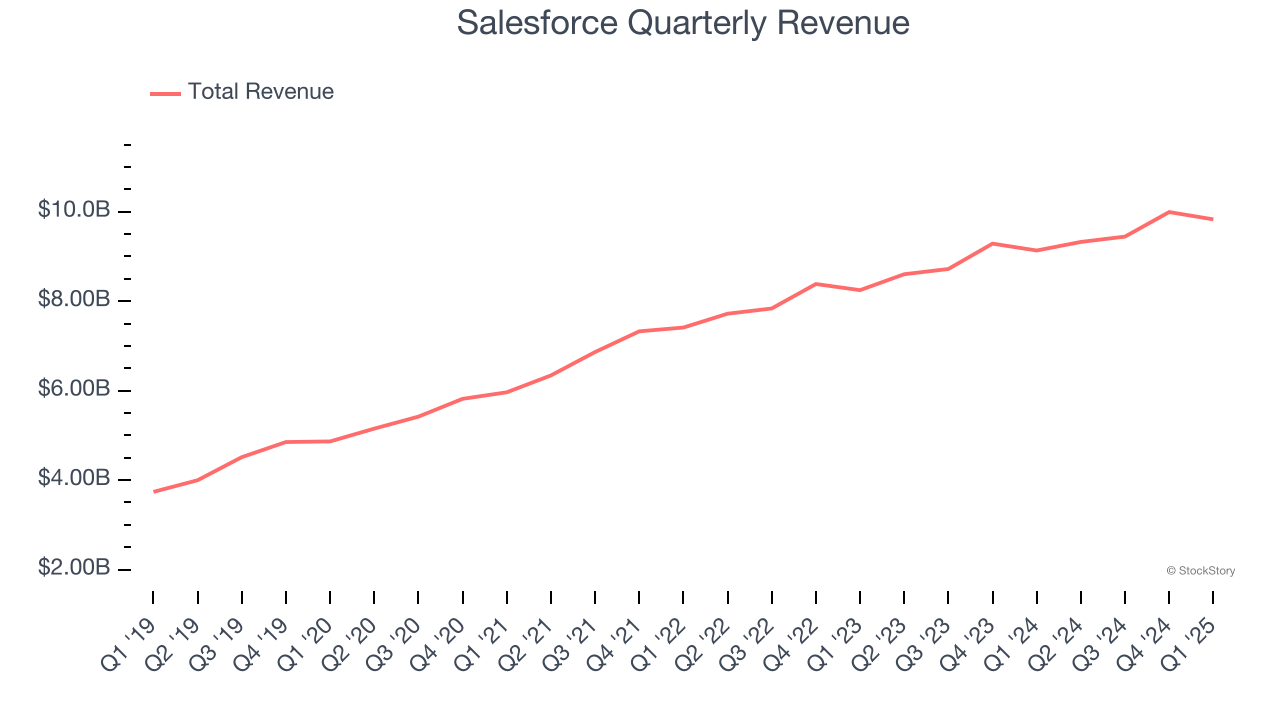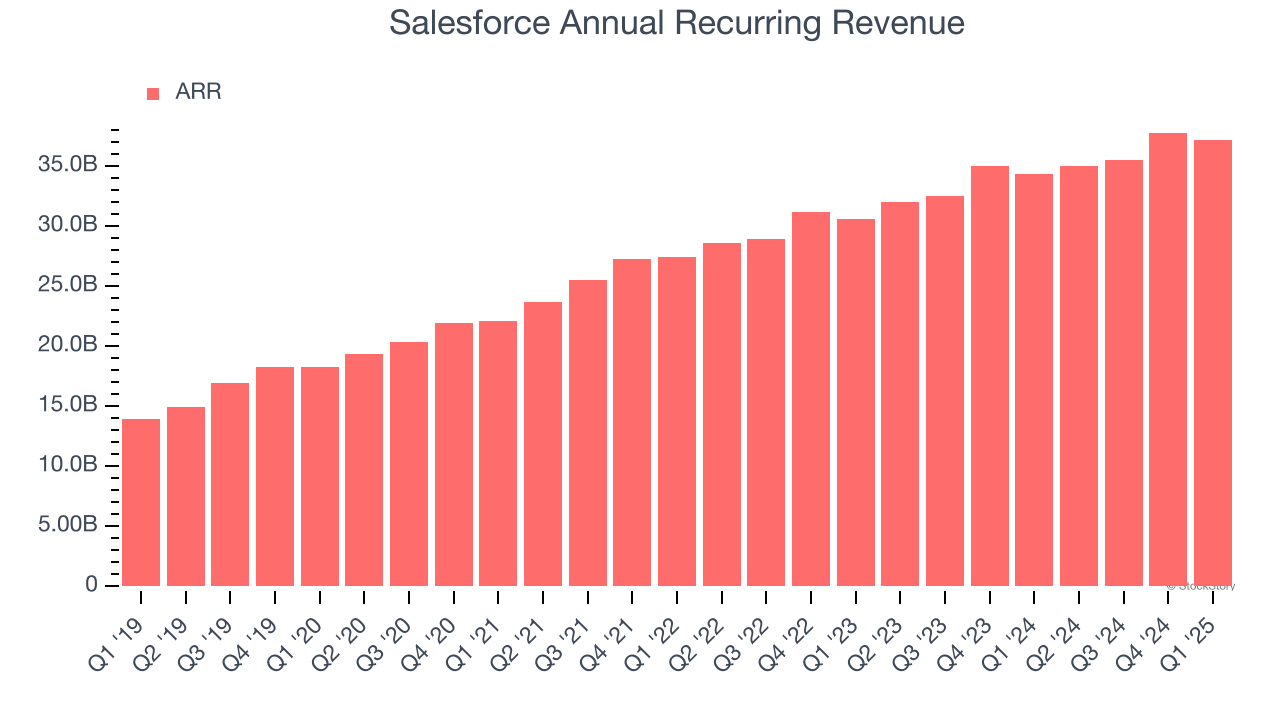
Salesforce’s stock price has taken a beating over the past six months, shedding 24.5% of its value and falling to $244.90 per share. This may have investors wondering how to approach the situation.
Is now the time to buy Salesforce, or should you be careful about including it in your portfolio? Dive into our full research report to see our analyst team’s opinion, it’s free.
Why Is Salesforce Not Exciting?
Despite the more favorable entry price, we're sitting this one out for now. Here are three reasons why we avoid CRM and a stock we'd rather own.
1. Long-Term Revenue Growth Disappoints
A company’s long-term sales performance can indicate its overall quality.
Any business can have short-term success, but a top-tier one grows for years.
Over the last three years, Salesforce grew its sales at a 11.4% annual rate. Although this growth is acceptable on an absolute basis, it fell short of our standards for the software sector, which enjoys a number of secular tailwinds.

2. Weak ARR Points to Soft Demand
While reported revenue for a software company can include low-margin items like implementation fees, annual recurring revenue (ARR) is a sum of the next 12 months of contracted revenue purely from software subscriptions, or the high-margin, predictable revenue streams that make SaaS businesses so valuable.
Salesforce’s ARR came in at $37.19 billion in Q1, and over the last four quarters, its year-on-year growth averaged 8.7%. This performance was underwhelming and suggests that increasing competition is causing challenges in securing longer-term commitments. 
3. Projected Revenue Growth Is Slim
Forecasted revenues by Wall Street analysts signal a company’s potential. Predictions may not always be accurate, but accelerating growth typically boosts valuation multiples and stock prices while slowing growth does the opposite.
Over the next 12 months, sell-side analysts expect Salesforce’s revenue to rise by 9.1%, a slight deceleration versus This projection is underwhelming and implies its products and services will see some demand headwinds.
Final Judgment
Salesforce isn’t a terrible business, but it doesn’t pass our quality test. After the recent drawdown, the stock trades at 5.6× forward price-to-sales (or $244.90 per share). While this valuation is fair, the upside isn’t great compared to the potential downside. We're fairly confident there are better stocks to buy right now. Let us point you toward a top digital advertising platform riding the creator economy.
Stocks We Like More Than Salesforce
Trump’s April 2025 tariff bombshell triggered a massive market selloff, but stocks have since staged an impressive recovery, leaving those who panic sold on the sidelines.
Take advantage of the rebound by checking out our Top 6 Stocks for this week. This is a curated list of our High Quality stocks that have generated a market-beating return of 183% over the last five years (as of March 31st 2025).
Stocks that made our list in 2020 include now familiar names such as Nvidia (+1,545% between March 2020 and March 2025) as well as under-the-radar businesses like the once-small-cap company Exlservice (+354% five-year return). Find your next big winner with StockStory today.
StockStory is growing and hiring equity analyst and marketing roles. Are you a 0 to 1 builder passionate about the markets and AI? See the open roles here.
